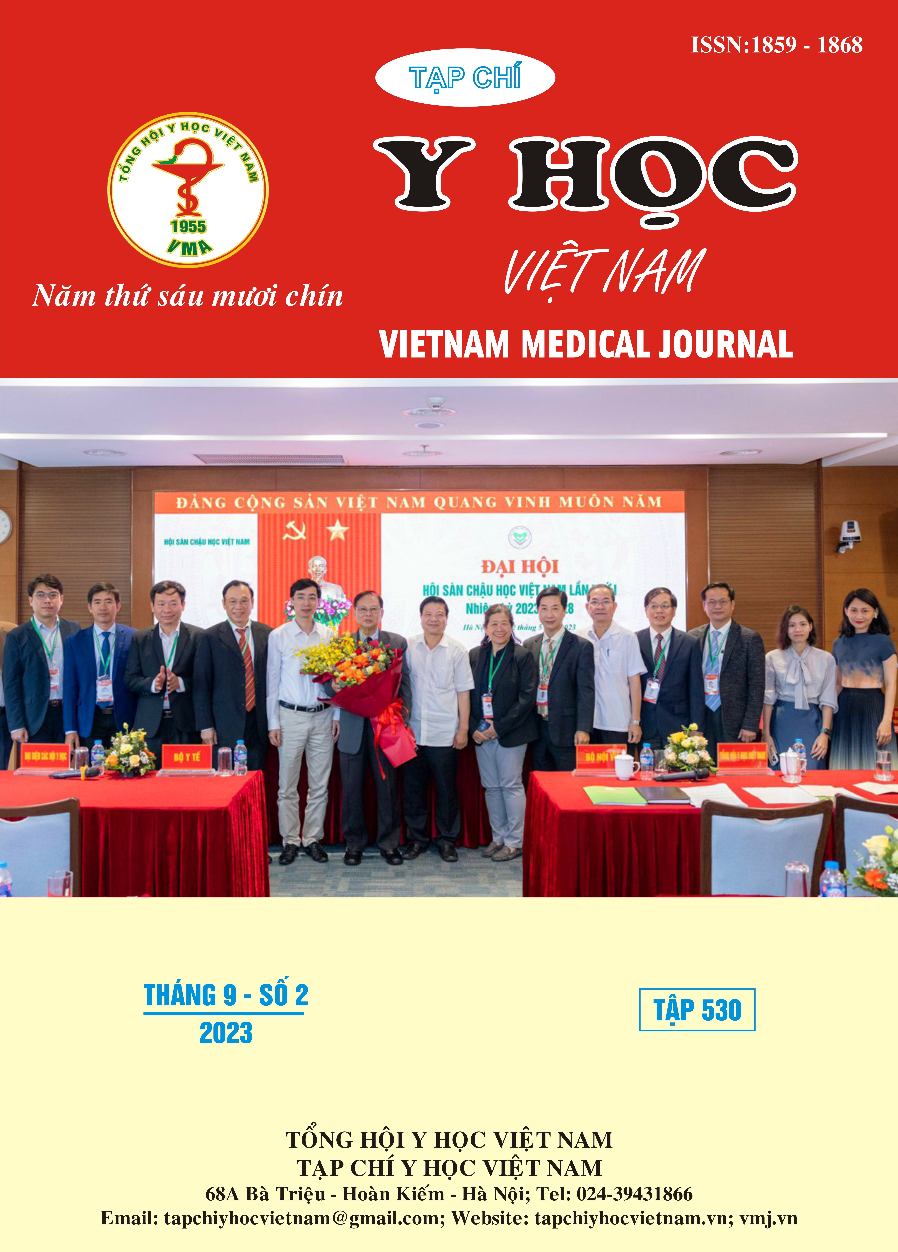CLINICAL, LABORATORIES CHARACTERISTICS AND BACTERIAL ETIOLOGY OF PERSISTENT PNEUMONIA IN CHILDREN AT NGHE AN OBSTETTICS AND CHILDREN'S HOSPITAL
Main Article Content
Abstract
Objectives: to describe the clinical, laboratories characteristics and bacterial etiology of persistent pneumonia in children from 1 month to 5 years old. Subjects and methods of study: A cross-sectional descriptive study surveying caregivers of children with persistent pneumonia from 1 month to under 5 years of age inpatient treatment at Nghe An Obstetrics and Pediatrics Hospital. Results: A study of 109 childrens showed that persistent pneumonia had a high rate of children from 1 to 12 months (64,2%), male/female ratio was 1,5/1. 87 childrens had ever had pneumonia. All patients with persistent pneumonia had a cough (100%). Tachypnea (70%), wheezing (87%), pulmonary rales (94%) are common physical symptoms. 27,5% of children with severe pneumonia. The most common underlying disease is congenital malformations. In which, congenital heart defect accounts for the highest rate (33.9%). Most patients have increased white blood cell counts, neutrophils and CRP. Bacteria are the most common cause of persistent pneumonia, followed by viruses. H.influenzae (30,7%), S.pneumoniae (21%), M.pneumoniae (19,3%) and P.aeruginosa (7%) are common bacteria causing disease. Conclusion: Persistent pneumonia mainly occurs in children from 1 month to less than 12 months of age, predominating in boys. Clinical manifestations of the disease are diverse. The most common underlying disease in children with persistent pneumonia is congenital malformations, especially congenital heart. WBC count, neutrophil percentage, CRP are increased in persistent pneumonia. There are many causes of persistent pneumonia, of which bacteria is the most common cause.
Article Details
Keywords
clinical, paraclinical, persistent pneumonia, bacteria.
References
2. Saad K, Mohamed SA, Metwalley KA. Recurrent/Persistent Pneumonia among Children in Upper Egypt. Mediterr J Hematol Infect Dis. 2013.
3. Trần Minh Thuỳ (2015), Khảo sát nguyên nhân viêm phổi kéo dài tại Khoa hô hấp bệnh viện Nhi Đồng. Trường Đại học Y Dược TP. Hồ Chí Minh
4. Phạm Thu Nga (2020). Đặc điểm lâm sàng, cận lâm sàng và một số yếu tố liên quan tới viêm phổi kéo dài ở trẻ từ 2 tháng đến 5 tuổi tại Bệnh viện Nhi Trung ương. Trường Đại học Y Hà Nội.
5. Trần Thị Mai Trinh (2018). Đặc điểm viêm phổi kéo dài ở trẻ dưới 5 tuổi tại khoa hô hấp bệnh viện nhi đồng 2. Trường Đại học Y dược thành phố Hồ Chí Minh.
6. Jyostna DA. Clinico-etiological profile of persistent pneumonia in children aged 2 months to 12 years in a tertiary care hospital. Acta Biomed.
7. Bùi Thị Thuý Nhung (2018). Đặc điểm lâm sàng, cận lâm sàng viêm phổi kéo dài do vi khuẩn tại Bệnh viện Nhi Trung ương. Tạp chí Y học Việt Nam
8. Kumar M, Biswal N, Bhuvaneswari V, et al. Persistent Pneumonia: Underlying Cause and Outcome. Indian journal of pediatrics. 2009;76:1223-1226.


